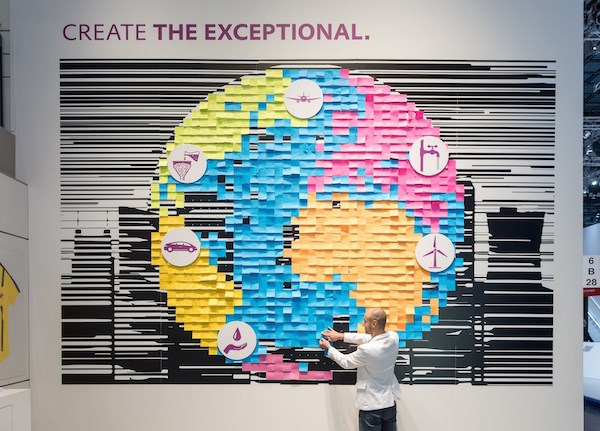Evonik Shares Results of its Post-it Note Campaign at K 2016
Environmental protection and sustainability led visitors’ comments.
Environmental protection and sustainability led visitors’ comments.
If you had the opportunity at K 2016 to visit the always bustling booth of Evonik, you’d be unlikely to miss an artist that was working to transform a black-and-white skyline into a colorful globe. The company invited customers and visitors to contribute creative ideas, visions or requests through its Post-it note campaign at the booth and via social media.
Nearly 2000 sticky notes were submitted keeping the Post-it artist busy. Participants could follow the campaign at the booth or on Twitter. An example of one note was: “Make plastic trash usable—100% of it!”. And, that signaled the campaign’s key results regarding visitors’ key concerns:
- Environmental protection and sustainability—with 511 notes on the wall about environmentally friendly plastics, recycling, or the conservation of resources.
- Solutions for lightweight construction (127 notes).
- Biobased plastics (106 notes).
- New materials for the automotive industry (85 notes).
- 3D printing advancement (74 notes).
- Medical technology advancement (69 notes).
Evonik Corporation, which plans to follow up on many of these ideas and concerns, will share interesting stories on Twitter and Linkedin over the coming weeks. It also mentioned posted groundbreaking ideas, such as self-cleaning surfaces and intelligent adhesives.

Related Content
-
Soft Prices for Volume Resins
While PP and PE prices may be bottoming out, a downward trajectory was likely for all other volume resins, including engineering types.
-
Scaling Up Sustainable Solutions for Fiber Reinforced Composite Materials
Oak Ridge National Laboratory's Sustainable Manufacturing Technologies Group helps industrial partners tackle the sustainability challenges presented by fiber-reinforced composite materials.
-
What's the Allowable Moisture Content in Nylons? It Depends: Part 2
Operating within guidelines from material suppliers can produce levels of polymer degradation. Get around it with better control over either the temperature of the melt or the barrel residence time.







